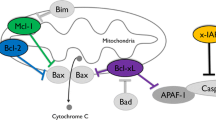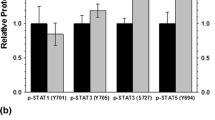Abstract
To avoid the harsh conditions of winter climates, hibernating mammals undergo a systematic depression of physiological function by reducing their metabolic rate. During this process, hibernators are exposed to significant stresses (e.g., low body temperature, ischemia–reperfusion) that must be dealt with appropriately to avoid irreversible tissue damage. Consequently, we investigated the contribution of stress-responsive antioxidant enzymes, heat shock proteins, signal transduction pathways (e.g., mitogen-activated protein kinases, MAPK), and transcription factors for their role in conferring tolerance to stress in the hibernating thirteen-lined ground squirrel (Ictidomys tridecemlineatus). Using a combination of multiplex protein panels and traditional immunoblotting procedures, we have focused on these stress factors in brown adipose tissue (BAT) and white adipose tissue (WAT) over cycles of torpor-arousal since they provide the means for heat production as a result of non-shivering thermogenesis and the mobilization of critical energy reserves, respectively. We show the differential and tissue-specific regulation of stress factors including a unified upregulation of the antioxidant enzyme Thioredoxin 1 in both tissues, an upregulation of superoxide dismutase (SOD1 and SOD2) in WAT, and an increase in heat shock proteins during the transitory periods of the torpor-arousal cycle (HSP90α in BAT and HSP60 in WAT). Additionally, an upregulation of the active form of ERK1/2 and p38 in BAT and select transcription factors (e.g., CREB-1 and ELK-1) in both tissues were identified. These data provide us with greater insight into the molecular mechanisms responsible for this animal’s natural stress tolerance and outline molecular signatures which define stress resistance.





Similar content being viewed by others
References
Carey HV, Andrews MT, Martin SL (2003) Mammalian hibernation: cellular and molecular responses to depressed metabolism and low temperature. Physiol Rev 83(4):1153–1181
Geiser F (2004) Metabolic rate and body temperature reduction during hibernation and daily torpor. Annu Rev Physiol 66(1):239–274
Storey KB (2010) Out cold: biochemical regulation of mammalian hibernation—a mini-review. Gerontology 56(2):220–230
Dark J (2005) Annual lipid cycles in hibernators: integration of physiology and behavior. Annu Rev Nutr 25(1):469–497
Eddy SF, Storey KB (2004) Up-regulation of fatty acid-binding proteins during hibernation in the little brown bat, Myotis lucifugus. Biochim Biophys Acta 1676(1):63–70
Storey KB, Storey JM (2010) Metabolic rate depression: the biochemistry of mammalian hibernation. Adv Clin Chem 52:77–108
Von der Ohe CG, Darian-Smith C, Garner CC, Heller HC (2006) Ubiquitous and temperature-dependent neural plasticity in hibernators. J Neurosci 26(41):10590–10598
Storey KB (2003) Mammalian hibernation: transcriptional and translational controls. In: Roach RC, Wagner PD, Hackett PH (eds) Hypoxia: through the lifecycle. Advances in experimental medicine and biology, vol 543. Kluwer/Plenum Academic, New York, pp 21–38
Storey KB, Storey JM (2007) Tribute to P. L. Lutz: putting life on ‘pause’—molecular regulation of hypometabolism. J Exp Biol 210(Pt 10):1700–1714
Allan ME, Storey KB (2012) Expression of NF-κB and downstream antioxidant genes in skeletal muscle of hibernating ground squirrels, Spermophilus tridecemlineatus. Cell Biochem Funct 30(2):166–174
Morin P, Storey KB (2007) Antioxidant defense in hibernation: cloning and expression of peroxiredoxins from hibernating ground squirrels, Spermophilus tridecemlineatus. Arch Biochem Biophys 461(1):59–65
Vucetic M, Stancic A, Otasevic V et al (2013) The impact of cold acclimation and hibernation on antioxidant defenses in the ground squirrel (Spermophilus citellus): an update. Free Radic Biol Med 65C:916–924
Storey K, Storey JM (2011) Heat shock proteins and hypometabolism: adaptive strategy for proteome preservation. RRB 2:57–68
Rouble AN, Hefler J, Mamady H, Storey KB, Tessier SN (2013) Anti-apoptotic signaling as a cytoprotective mechanism in mammalian hibernation. PeerJ 1:e29
Gehart H, Kumpf S, Ittner A, Ricci R (2010) MAPK signalling in cellular metabolism: stress or wellness? EMBO Rep 11(11):834–840
Lawrence MC, Jivan A, Shao C et al (2008) The roles of MAPKs in disease. Cell Res 18(4):436–442
Plotnikov A, Zehorai E, Procaccia S, Seger R (2011) The MAPK cascades: signaling components, nuclear roles and mechanisms of nuclear translocation. Biochim Biophys Acta 1813(9):1619–1633
Arnér ES, Holmgren A (2000) Physiological functions of thioredoxin and thioredoxin reductase. Eur J Biochem 267(20):6102–6109
Chen Y, Zhang J, Lin Y et al (2011) Tumour suppressor SIRT3 deacetylates and activates manganese superoxide dismutase to scavenge ROS. EMBO Rep 12(6):534–541
Rothgiesser KM, Erener S, Waibel S, Lüscher B, Hottiger MO (2010) SIRT2 regulates NF-κB dependent gene expression through deacetylation of p65 Lys310. J Cell Sci 123(Pt 24):4251–4258
Richter K, Haslbeck M, Buchner J (2010) The heat shock response: life on the verge of death. Mol Cell 40(2):253–266
Feder ME, Hofmann GE (1999) Heat-shock proteins, molecular chaperones, and the stress response: evolutionary and ecological physiology. Annu Rev Physiol 61:243–282
Wegele H, Müller L, Buchner J (2004) Hsp70 and Hsp90—a relay team for protein folding. Rev Physiol Biochem Pharmacol 151:1–44
Kleinridders A, Lauritzen HP, Ussar S et al (2013) Leptin regulation of Hsp60 impacts hypothalamic insulin signaling. J Clin Invest 123(11):4667–4680
Magnoni R, Palmfeldt J, Hansen J, Christensen JH, Corydon TJ, Bross P (2013) The Hsp60 folding machinery is crucial for manganese superoxide dismutase folding and function. Free Radic Res 48(2):168–179
Corydon TJ, Hansen J, Bross P, Jensen TG (2005) Down-regulation of Hsp60 expression by RNAi impairs folding of medium-chain acyl-CoA dehydrogenase wild-type and disease-associated proteins. Mol Genet Metab 85(4):260–270
Kim EK, Choi EJ (2010) Pathological roles of MAPK signaling pathways in human diseases. Biochim Biophys Acta 1802(4):396–405
Bardwell L (2006) Mechanisms of MAPK signalling specificity. Biochem Soc Trans 34(Pt 5):837–841
Liu J, Lin A (2005) Role of JNK activation in apoptosis: a double-edged sword. Cell Res 15(1):36–42
Gutiérrez-uzquiza Á, Arechederra M, Bragado P, Aguirre-Ghiso JA, Porras A (2012) p38α mediates cell survival in response to oxidative stress via induction of antioxidant genes: effect on the p70S6K pathway. J Biol Chem 287(4):2632–2642
Kuwabara M, Asanuma T, Niwa K, Inanami O (2008) Regulation of cell survival and death signals induced by oxidative stress. J Clin Biochem Nutr 43(2):51–57
Lu Z, Xu S (2006) ERK1/2 MAP kinases in cell survival and apoptosis. IUBMB Life 58(11):621–631
Cao W, Daniel KW, Robidoux J et al (2004) p38 mitogen-activated protein kinase is the central regulator of cyclic AMP-dependent transcription of the brown fat uncoupling protein 1 gene. Mol Cell Biol 24(7):3057–3067
Collins S, Bordicchia M (2013) Heart hormones fueling a fire in fat. Adipocyte 2(2):104–108
Lindquist JM, Rehnmark S (1998) Ambient temperature regulation of apoptosis in brown adipose tissue. Erk1/2 promotes norepinephrine-dependent cell survival. J Biol Chem 273(46):30147–30156
Adderley SR, Fitzgerald DJ (1999) Oxidative damage of cardiomyocytes is limited by extracellular regulated kinases 1/2-mediated induction of cyclooxygenase-2. J Biol Chem 274(8):5038–5046
Matsuzawa A, Ichijo H (2008) Redox control of cell fate by MAP kinase: physiological roles of ASK1-MAP kinase pathway in stress signaling. Biochim Biophys Acta 1780(11):1325–1336
Mebratu Y, Tesfaigzi Y (2009) How ERK1/2 activation controls cell proliferation and cell death: is subcellular localization the answer? Cell Cycle 8(8):1168–1175
Wu CW, Storey KB (2012) Pattern of cellular quiescence over the hibernation cycle in liver of thirteen-lined ground squirrels. Cell Cycle 11(9):1714–1726
Shaywitz AJ, Greenberg ME (1999) CREB: a stimulus-induced transcription factor activated by a diverse array of extracellular signals. Annu Rev Biochem 68:821–861
Besnard A, Galan-Rodriguez B, Vanhoutte P, Caboche J (2011) Elk-1 a transcription factor with multiple facets in the brain. Front Neurosci 5:35
Herzig S, Hedrick S, Morantte I, Koo SH, Galimi F, Montminy M (2003) CREB controls hepatic lipid metabolism through nuclear hormone receptor PPAR-gamma. Nature 426(6963):190–193
Lee B, Cao R, Choi YS et al (2009) The CREB/CRE transcriptional pathway: protection against oxidative stress-mediated neuronal cell death. J Neurochem 108(5):1251–1265
Demir O, Aysit N, Onder Z et al (2011) ETS-domain transcription factor Elk-1 mediates neuronal survival: SMN as a potential target. Biochim Biophys Acta 1812(6):652–662
O’Donnell A, Odrowaz Z, Sharrocks AD (2012) Immediate-early gene activation by the MAPK pathways: what do and don’t we know? Biochem Soc Trans 40(1):58–66
Hirota K, Matsui M, Murata M et al (2000) Nucleoredoxin, glutaredoxin, and thioredoxin differentially regulate NF-kappaB, AP-1, and CREB activation in HEK293 cells. Biochem Biophys Res Commun 274(1):177–182
Acknowledgments
We would like to thank Dr. JM Hallenbeck and Dr. DC McMullen (NINDS, NIH, Bethesda) for providing the tissue samples for this study. Thanks also to JM Storey for editorial review of the manuscript. This research was supported by a discovery grant from the Natural Sciences and Engineering Research Council (NSERC) of Canada to KBS and the Canada Research Chairs program. ANR held a NSERC CGSM scholarship and SNT held a NSERC PGSD scholarship.
Author information
Authors and Affiliations
Corresponding author
Rights and permissions
About this article
Cite this article
Rouble, A.N., Tessier, S.N. & Storey, K.B. Characterization of adipocyte stress response pathways during hibernation in thirteen-lined ground squirrels. Mol Cell Biochem 393, 271–282 (2014). https://doi.org/10.1007/s11010-014-2070-y
Received:
Accepted:
Published:
Issue Date:
DOI: https://doi.org/10.1007/s11010-014-2070-y




